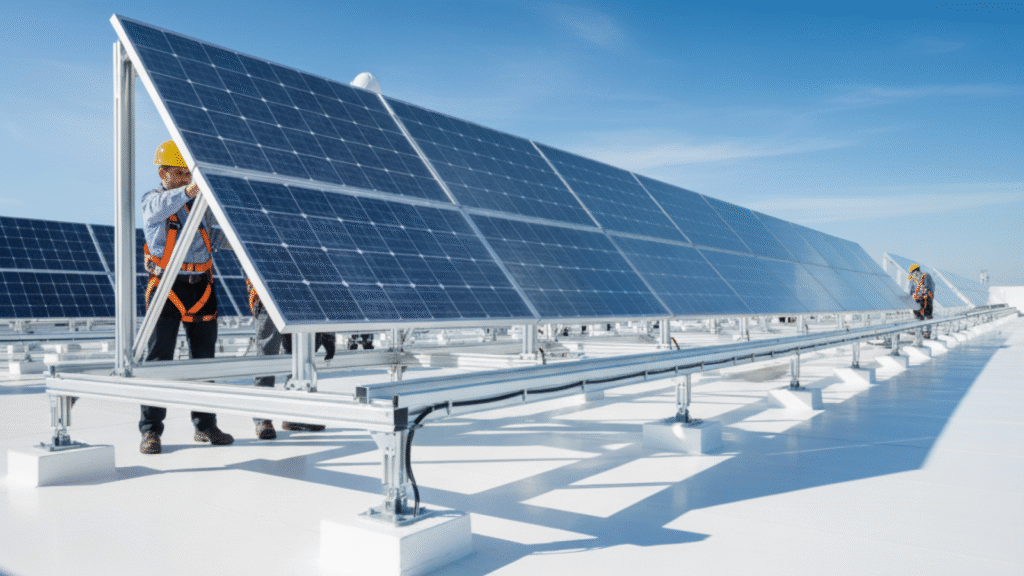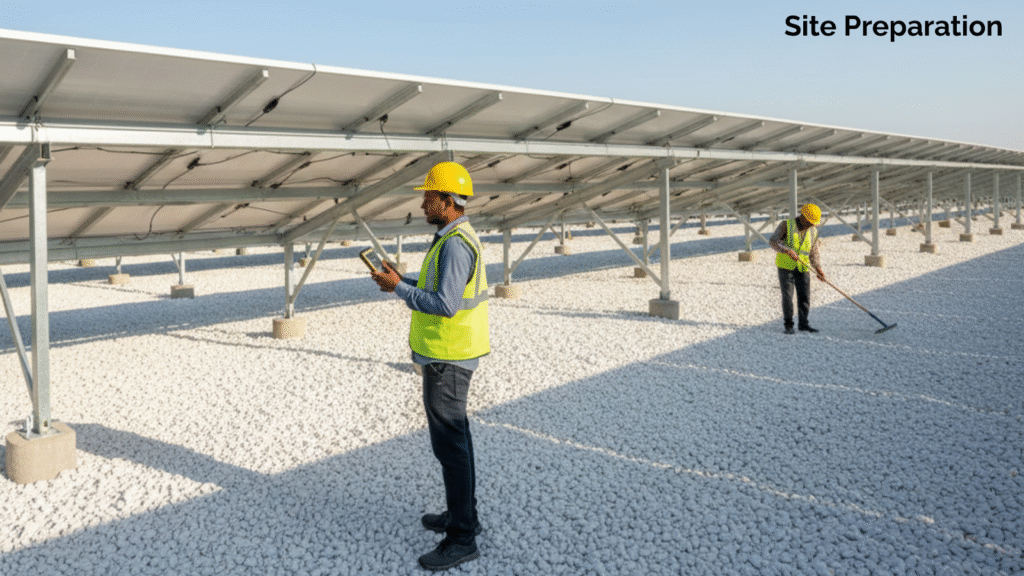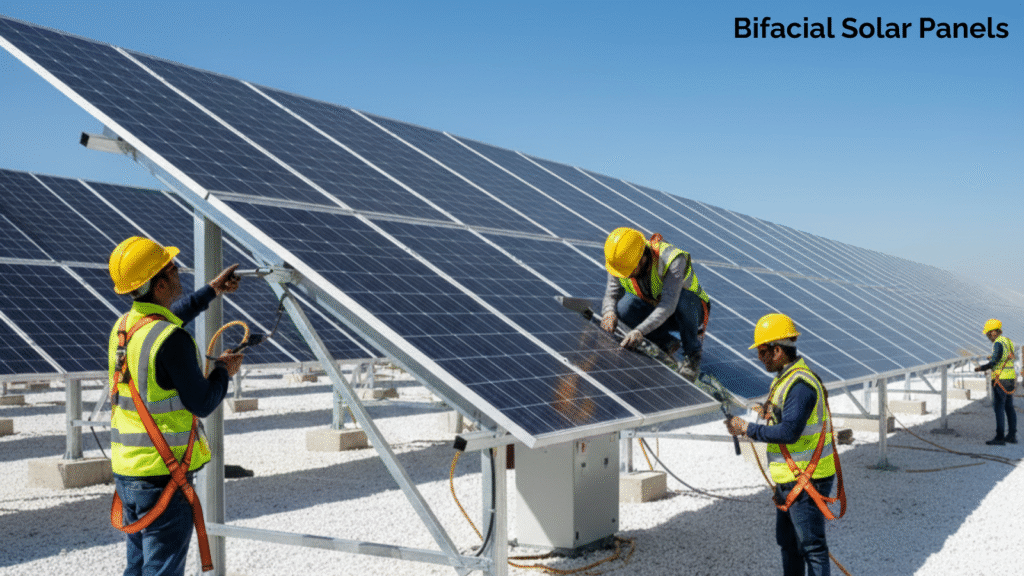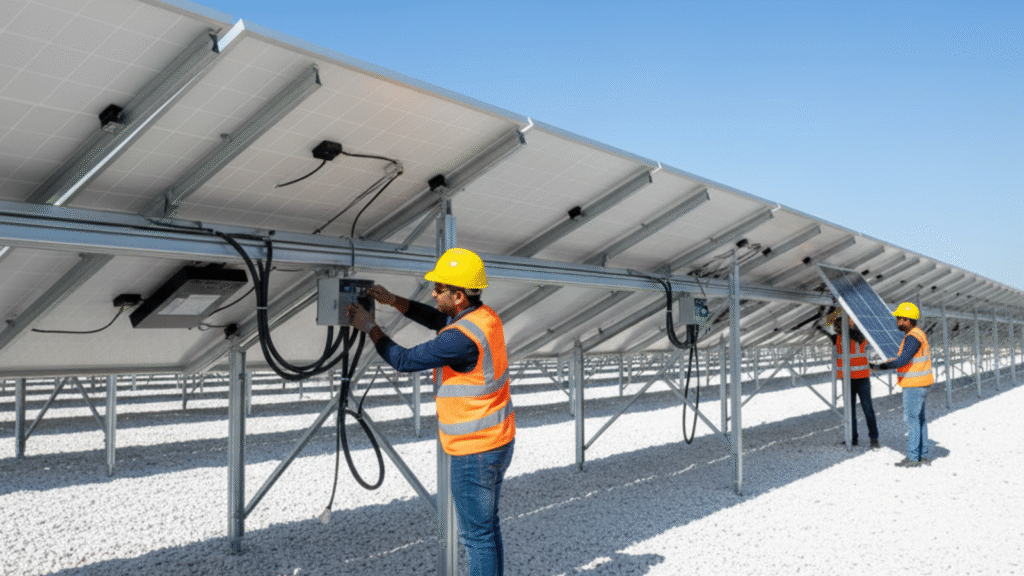
Thinking of installing bifacial solar panels? This comprehensive guide covers everything from site prep and albedo calculation to choosing the right racking and handling the durable, high-efficiency bifacial PV modules. Unlock the full 30% bifacial gain for your system.
Why Specialized Installation is Essential for Bifacial PV Systems

Bifacial solar panels represent a major leap in PV technology. Unlike older monofacial models, these innovative panels capture sunlight from both the front and the back, dramatically boosting energy production. This dual-sided functionality, often called bifacial gain, can increase your energy yield by 5% to 30%. However, achieving this gain demands a specialized installation approach. This guide details the critical steps and best practices for successfully installing bifacial solar panels to ensure maximum ROI.
Bifacial technology is rapidly becoming the industry standard for large-scale and commercial projects where maximizing power density is crucial. The investment in these high-efficiency bifacial modules only pays off if the system is correctly designed to maximize the rear-side light capture. Simply placing a bifacial panel on standard racking will severely limit its potential. We focus on optimizing clearance, reflection, and cable management—the three pillars of a successful bifacial solar project.
1: Site Preparation & Maximizing Albedo for Bifacial Panels

The energy gain from the rear side of bifacial solar panels is entirely dependent on the albedo (the reflectivity of the surface beneath the array).
Calculating and Boosting Ground Reflectivity
You must prioritize surfaces that reflect light. High-albedo surfaces like white gravel, light-colored concrete, or white membrane roofing provide the best results, maximizing light bounce-back.
- Actionable Step: Use white crushed stone beneath ground-mounted bifacial solar panels to significantly boost performance.
- Avoid: Dark surfaces like asphalt or black rooftops, as they absorb light and minimize the bifacial gain.
Eliminating Rear-Side Shading
Any object, rail, or cable casting shadows on the rear of the panel will directly reduce the energy yield. This is often the biggest mistake in non-optimized bifacial PV installations.
Comparative Guide: Bifacial vs. Monofacial Installation Needs
| Feature | Monofacial Panel Installation | Bifacial Solar Panel Installation | Impact on Bifacial Gain |
| Ground/Roof Clearance | Low (close to surface) | High (1m+ recommended) | Directly improves rear light access |
| Albedo (Reflectivity) | Irrelevant | Highly Important | Higher albedo = higher gain |
| Cable Routing | Can be run behind panel | Must be run along sides (out of sight) | Reduces rear-side shadow losses |
2: Racking and Mounting Best Practices for Bifacial Solar Panels

The mounting structure is the most critical element influencing the success of a bifacial solar panel installation.
Achieving Optimal Panel Height and Clearance
Bifacial solar panels must be elevated higher than traditional panels to allow enough space for reflected light to reach the back.
- Ground Mounts: Aim for a minimum clearance of 1.0 to 1.5 meters (3.3 to 5 feet) between the ground and the panel’s bottom edge.
- Flat Roofs: Maintain at least 15–20 cm (6–8 inches) of clearance between the roof and the panel back to optimize light reflection and airflow.
Selecting Bifacial-Optimized Racking Solutions
Traditional dark, solid rails create permanent shaded strips. Choose racking designed to minimize obstruction.
- Tip: Opt for systems with minimal, light-colored, or reflective rails.
- The Ultimate Setup: Single-axis trackers are the ideal mounting solution for large-scale bifacial solar projects, as they dynamically maximize both front- and rear-side capture.
Installation Components Checklist for Optimal Bifacial Gain
| Component | Monofacial Standard | Bifacial Solar Optimization Required |
| Fasteners/Clamps | Dark Metal | Light-colored or reflective aluminum |
| Cable Ties/Clips | Black or dark colored | Transparent or light colored |
| Junction Box Placement | Under the panel center | Off-center, minimal footprint |
| Grounding Straps | Thick, dark straps | Thin, reflective material, minimal contact |
3: Electrical Design and Handling Bifacial PV Modules

The enhanced power output requires careful electrical planning.
Inverter Sizing and String Design for Bifacial Solar
Because the bifacial gain temporarily increases the panel’s maximum power output (Pmax), you must account for this when designing your string and selecting your inverter.
- DC/AC Ratio: Adjust your system’s DC-to-AC ratio (often oversized) to ensure the inverter can handle the occasional peak surge created by the extra rear-side power.
- Safety: Always adhere to the increased short-circuit current (ISC) rating specific to the bifacial solar panels model.
Safe Handling of Double-Glass Bifacial Panels
Most bifacial panels use a heavy, durable glass-on-glass construction. Always use a two-person team to lift and transport them to avoid twisting the frame and causing micro-cracks.
Conclusion: Investing in Optimized Bifacial Solar Performance
The future of solar energy is unequivocally dual-sided. By meticulously adhering to this specialized Bifacial Solar Panel Installation Guide, you guarantee that your high-performance modules are placed and connected for maximum light exposure. Remember, a successful bifacial PV system is a delicate balance of height, reflectivity, and minimal shading. Choosing the right components and respecting the structural integrity of these advanced panels translates directly into higher energy output, superior long-term reliability, and a significantly lower Levelized Cost of Electricity (LCOE).
FAQ Section: Common Questions About Bifacial Solar Panels
Q1: Can I install bifacial solar panels on a standard shingled roof?
A: Yes, but the gain is minimal. Dark shingles offer low albedo (reflection), and clearance is usually poor. They perform best on white roofs or elevated ground mounts.
Q2: Do bifacial solar panels require special inverters?
A: No, standard inverters work. However, the installer must oversize the string (adjust the DC/AC ratio) to handle the temporary power surge from the bifacial gain.
Q3: How much extra energy do bifacial PV systems produce?
A: The extra energy (bifacial gain) typically ranges from 5% to 30%. This variation depends heavily on the ground reflection (albedo) and the panel height/tilt.
Q4: Are bifacial solar panels more expensive than monofacial panels?
A: The initial cost is slightly higher. However, the superior efficiency and higher energy yield lead to a lower Levelized Cost of Electricity (LCOE) over the 25-30 year lifespan, offering a better long-term ROI.
Q5: Are bifacial panels more durable since they use glass on both sides?
A: Yes. The glass-on-glass construction (used by many bifacial modules) provides superior protection against moisture and mechanical stress, generally resulting in longer product warranties.

